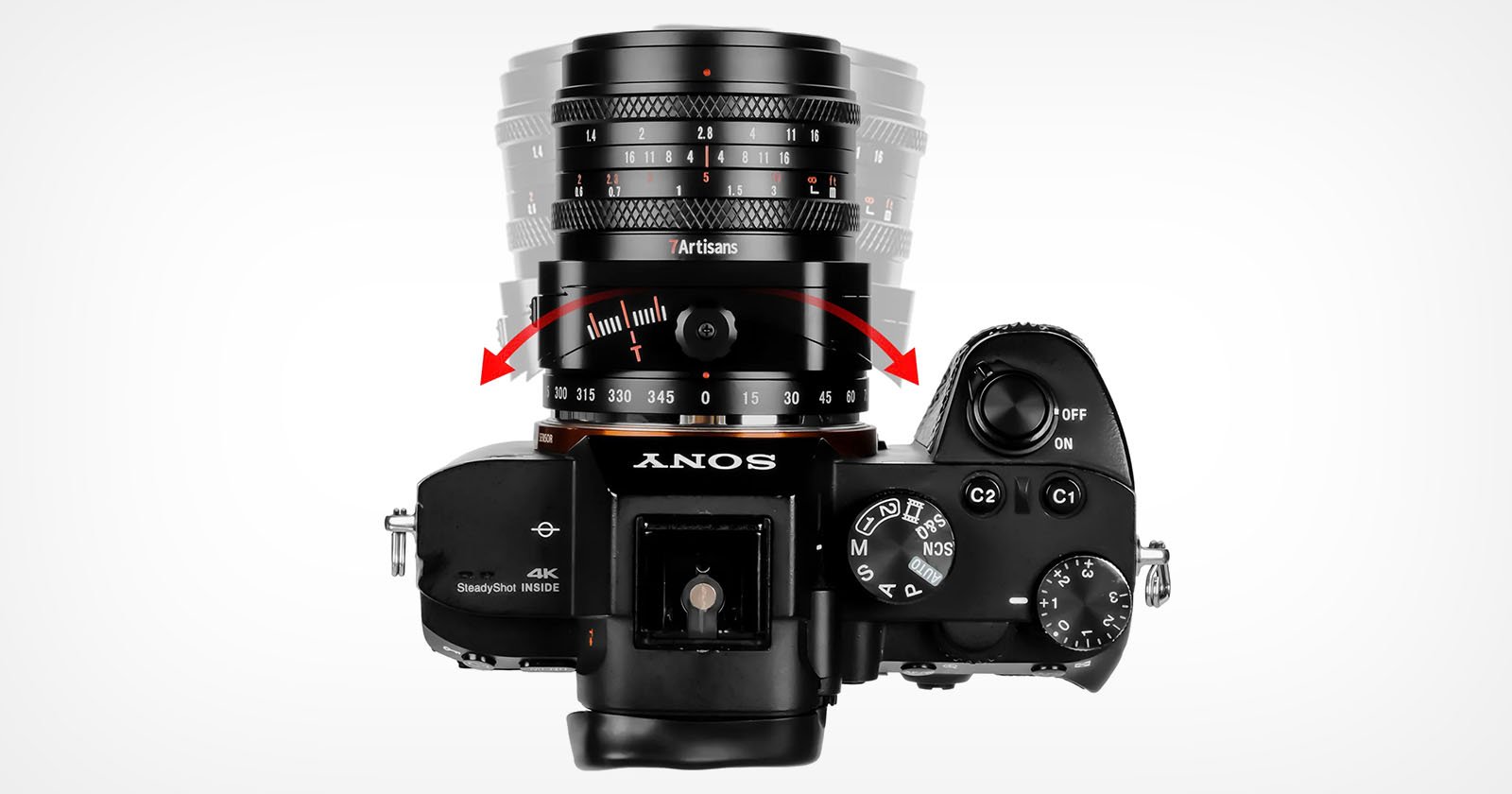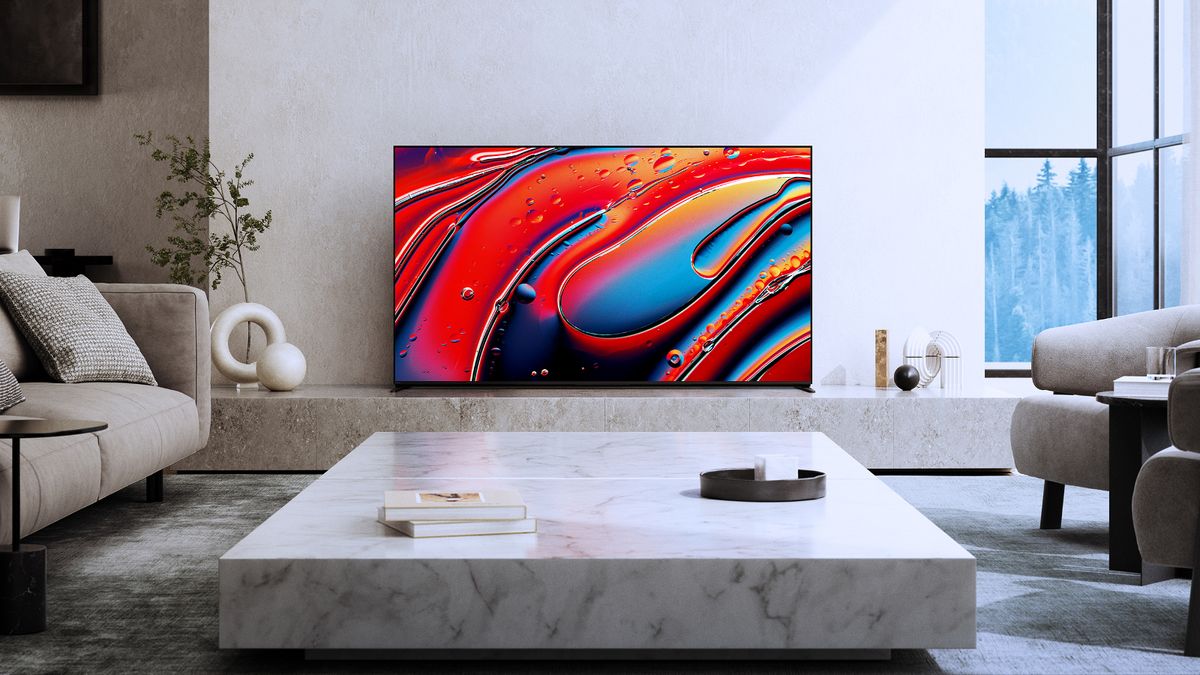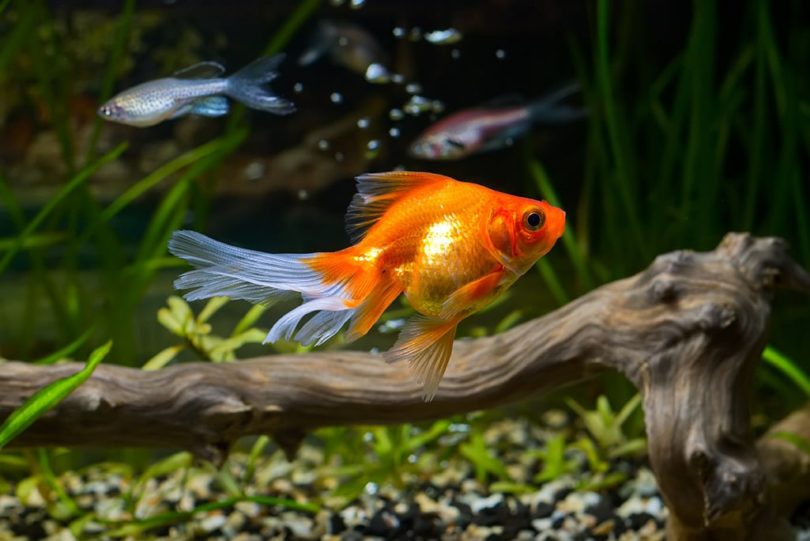

Goldfish are by far one of the most interesting pets in the hobby. Like all pets, they thrive when cared for properly. This means meeting all their needs and requirements so that you can experience many years with your beloved goldfish. We all want our pets to be healthy and happy and this guide has all the essential steps to keep a healthy and long-lived goldfish.
Goldfish get the reputation for being easy to care for, or that they make great pets for children. Interestingly, goldfish are more difficult to care for than most people believe. If you want to ensure that you are doing the absolute best for your goldfish, you want to make sure you follow some particularly important steps in their care.

Surviving vs Thriving
As easy as it is to place a goldfish in a bowl and call it complete, this is not going to result in your goldfish thriving or being content with its environment. Although your goldfish may survive in the bowl, there is more to their care for many owners to understand. It is important to keep in mind that surviving is not thriving, and goldfish can relate to that phrase!
Goldfish make great additions to aquariums and bring a lot of joy in ownership to both adults and supervised children alike. We hope to help you understand goldfish care better while allowing you to have the opportunity to reap the benefits of providing a good home for your goldie and seeing them with bright colors and erect fins swimming happily around the tank.
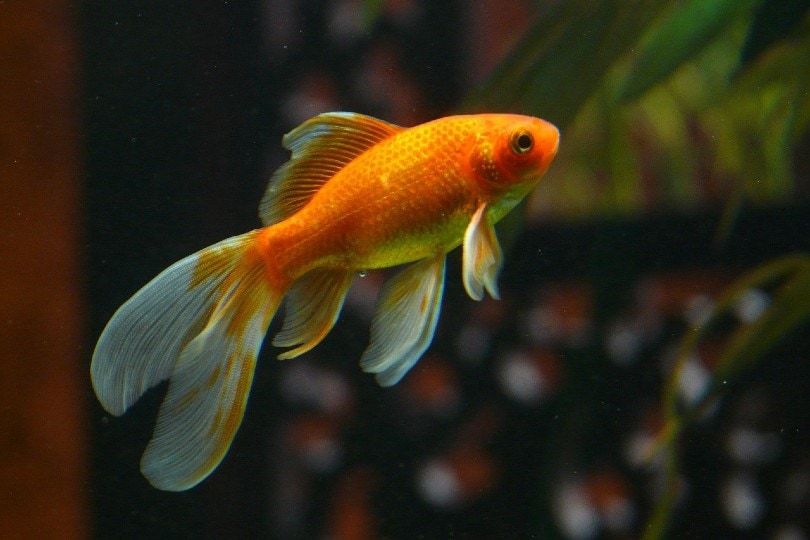
Essential Goldfish Items
Before you get your goldfish, you should ensure that you have all their necessary items beforehand. This will help you to care for them properly and make maintenance a lot easier.
These are the main items you should have set up before you purchase a goldfish:
- A large rectangular tank
- Filter
- Goldfish food
- Dechlorinate
- Substrate (gravel, sand, pebbles)
- Decorative plants (real or fake)
- Aeration system
- Thermometer
Signs That Your Goldfish Is Happy & Healthy
It is not difficult to determine if your goldfish is happy as there are a variety of factors that form part of the decision and looking at the external body of the fish, can give you a good indication.
- Vibrant coloration: the colors should stand out and not appear to be dull. Although it is hard to determine this with black or grey colored goldfish.
- Hearty appetite: a healthy goldfish will readily consume any food that your place into the tank.
- Active: a healthy goldfish will not typically bottom-sit on the floor of the tank and will be constantly active aside from when it sleeps. The only exceptions to this are very heavy finned goldfish who may need a rest for a few seconds. Some goldfish may sleep on the substrate in the tank, usually under a decoration for shelter.
- Erect fins: the goldfish’s fins should not be clamped against the body and they should swim freely.
- Healthy poop: the poop should be medium in length and the same color as the food they eat. Red or orange poop is usually the result of commercial flakes and pellets.
- Free of illness and disease: the goldfish should not have any visible symptoms of the disease such as white spots or fungal growth. A bloated abdomen could mean they are having trouble digesting their food.

11 Steps to Care for Your Goldfish
1. Tank Size
Contrary to popular belief, goldfish are not supposed to be housed in bowls or vases. These are simply too small to provide your goldfish with enough swimming space and still have room for all the essential equipment. Goldfish should be housed in a standard rectangular tank. Although there is no minimum size tank for a goldfish, we recommend larger tanks to beginners so there is more room for error. It is important to consider the adult size these fish grow to. Goldfish can grow up to 12 inches in the wild and when provided with proper conditions in the wild. When choosing the best tank for your goldfish, ensure it has plenty of room for them to swim and grow. The tank should be able to fit a filter, aeration system, decoration, and any other tank necessities. It is easy to keep a goldfish healthy and happy in appropriate conditions, a suitable size and shaped tank is a great way to start!
- Note: Spherical-shaped aquaria-like bowls can distort the outside view and stress out your goldfish.
2. Water Parameters
Water is one of the most important steps to keep your goldfish healthy. Your goldfish depends on the water for basic survival mechanisms. The tank should regularly be replenished with clean and fresh water. Goldfish cannot survive in dirty water full of chemicals, pollutants, or spiking parameters (ammonia, nitrite, nitrate). Ammonia spikes are common in a tank that is uncycled or has not been properly maintained. Nitrate spikes are popular in tanks that have a high bioload and are not regularly cleaned. Water renewals are important to replenish dirty water. There are a lot of minerals in freshwater that are necessary for goldfish. Disease and infections breed in poorly maintained aquariums and this can be hazardous for your goldfish. Keep in mind that humans cannot visibly see the quality of the water with the naked eye. Water testing kits can tell us how high or low the water parameters are. Aside from the water parameters that waste induces, it is also important to measure the kH and GH of the water. Bottled, tap, and reverse osmosis water are perfectly safe for a goldfish. All water sources will have to be dechlorinated as chlorine is extremely harmful to goldfish and will kill them in a matter of minutes. The water should also be richly aerated so your goldfish can breathe without gulping from the surface.
3. Filtration
All tanks require a filter to help keep the water clean. A filter is also necessary to run a current through the water so that the water is not sitting stagnant in the tank. Some filters will also have the bonus of an aeration system, such as a spray bar or bubbler. Filters are particularly important for goldfish tanks because goldfish are so messy. They produce a lot of waste which takes a toll on the tank’s bio-load. There are three main methods of filtration, mainly biological, chemical, or mechanical. Goldfish can benefit from any of the three methods of filtration, and it will help them to thrive in their environment.
There are also a variety of filters to choose from and each one meets a certain tank need:
- Sponge filter: highly effective at waste control and allows for many beneficial bacteria to establish.
- Cartridge filter: these filters are ideal for large tanks and keep the water clear and free of any nasty smells.
- Hang-on-back filter (HOB): this is a good filter for aquarists who do not want a filter inside of the aquarium. They also help produce a good amount of surface aeration while being an effective filtration system.
- Submersible filter: these are one of the most common filters. They do their job well and usually have internal sponges with an impeller. They usually have a strong current and more expensive ones can come with an additional spray bar.
- Under gravel filter: this is another hidden filter that is good at removing waste such as poop or food that gets stuck under the substrate. They are not the best when used alone and should be paired with another type of filter.
- Sump system: this allows you to incorporate a variety of filtration materials into an additional compartment. This is one of the best filters for goldfish and keeps the water pristine visually while keeping the parameters under control.
- Canister filter: these filters hold different materials used to filter water. They do not necessarily remove waste but do help keep the water clear.
4. Dechlorinate
All water sources will contain a certain amount of chlorine. When water is cleaned, it goes through a process that leaves chlorine residue in the water. Although this is safe in small amounts for human consumption, it is extremely dangerous for aquatic life. Borehole water and bottled water seem to have the least amount of chlorine but still require a good dechlorinate. Tap water contains the highest amount of chlorine and therefore will require a lot of dechlorinate. The bottles will usually have a measuring system on the label to inform you on how much dechlorinate to add per liter or gallon of water. This should be added five minutes before adding the fish and topped up with every water change.
5. Aeration systems
Goldfish need surface agitation to breathe properly. Since water holds a certain amount of oxygen beneath the surface, it can quickly be used up if it is not constantly replenished. Oxygen enters the water through the surface of the water and surface movement is necessary to push the oxygen throughout the water. You want to ensure that the surface of the tank is constantly moving, whether infrequent ripples from the spray bar or bubbles from a bubbler and air stone. Warm water holds less oxygen than cold water does. This makes it important to ensure the water is strongly aerated over 18°C.
There are a variety of ways to get the surface of the water constantly moving, this can be done by using a:
- Spray bar
- Bubbler
- Airstone
- Bubble wall
- Wavemaker
These systems should be running constantly for 24 hours a day. Most of them will be energy-saving and cost little to routinely oxygenate the water.
6. Choosing healthy goldfish
It is important to make sure that the goldfish you choose is healthy from the start. When goldfish are sick, it is a very time-sensitive matter. Goldfish will not typically show signs of illness till it is too late. When you are browsing for your goldfish, you want to make sure that you watch them swim around the tank for a few minutes before you decide to take them home. The goldfish should be active with fins that stand up comfortably around the fish. The other fish in the tank should be active and responsive.
If you move in front of the tank, the fish should respond to you and some may even attempt to follow you for food. A goldfish will associate a person coming close to the tank to feed them, this will encourage them to swim up to you. The fish should have no white dots, growths, infections, or torn fins. The water should be clean, and the employees should practice good tank hygiene. It is important to notice if the fish has a bloated or sunken stomach. Both are undesirable in a healthy fish and could indicate an underlying illness. You should also choose a goldfish type that will fit the size of your tank for the next year.
Goldfish grow rapidly under the correct conditions and you may even have to upgrade them within the next few months. For that reason, we encourage you to get the largest tank possible for your goldfish before you purchase them.
7. Water Testing
Since we cannot see the levels of ammonia, nitrite, and nitrate in the water, we need to test the water regularly. This means that we must make use of a liquid testing kit. This will be able to give us a good indication of what the water parameters are within the water. This is an extremely important step that should be done at least once a week. Water testing when the tank is still new or cycling should be done up to three times a week. The liquid testing kit should come with NH3, NO2, and NO3 test bottles. Liquid testing kits are recommended over testing strips as they are more accurate. It is important to follow the instructions on the pamphlet each time you test the water. Adding in the wrong bottle of drops will give you an inaccurate reading.
8. Feeding
Making sure that your goldfish receives a quality diet is important. A good goldfish food will be suited for omnivores and generally be labelled as ‘goldfish food’. Since other fish do not require the same diet as a goldfish, you should look for a species-appropriate food and not one that is tailored to the needs of other fish.
Goldfish food should have the following guaranteed analysis:
- Protein: < 30%
- Fat: > 10%
- Fibre: < 3%
- Crude ash: > 12%
- Vitamins and minerals: Vitamin A (3-6 IU), Vitamin D (1-3 IU), Vitamin E (0,03-0,06 mg), and Vitamin K (0,006 mg0)
You should also incorporate a variety of plant material into their diet as well as provide access to meat-based supplements. Daphnia, brine shrimp, mosquito larvae, tubifex worms, and bloodworms make great protein-rich foods to keep your goldfish healthy. These foods can be fed up to three times a week depending on the size of your goldfish and can be fed live or freeze-dried.
Plant-based materials like algae wafers or sinking pellets, deshelled peas, romaine lettuce, cucumber, and carrot can be fed to help with digestion and promote variety within the diet. The food should also sink so that your goldfish do not gulp air along with the food and cause issues with their swim bladder.
9. Medicating
Goldfish are prone to a variety of illnesses that will require immediate treating. If you notice or suspect that your goldfish may be ill, you should immediately quarantine them. In the quarantine or medical tank, you need to dose them with the right type of medication according to their symptoms. Before adding a new goldfish to your tank, you should put it in a separate quarantine tank for 1 to 2 weeks. This will help you to determine if they have been hiding a disease from a pet store and then you can treat them accordingly without risking your other goldfish in the main tank.
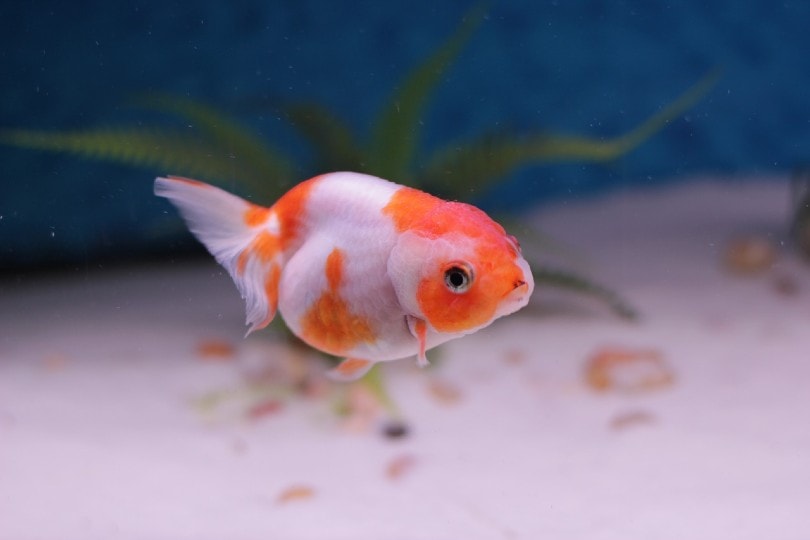
10. Accessories
Decorations help to provide shelter and safety within an aquarium. Goldfish are naturally prey animals that require plants, caves, rocks, and other sheltering aquarium decorations to feel safe. It is ideal to add in live plants that have thick leaves so your goldfish do not try to eat them. Annubias, hornwort, and amazon swords are great plants for goldfish.
Fake decorations are also welcomed into a goldfish tank and can add color and enhance the view of the tank. Caves are also good for a goldfish to sleep inside; these decorations can be sold in the aquatic decoration section at your local fish store. They should have more than one large opening and not be able to fall on its side and block the exit. Goldfish do not need heavily decorated tanks, but they should not be sparse either.
11. The Nitrogen Cycle
After you set up the tank and before you even decide on what type of goldfish you want, you should cycle the tank first. This can take between 2 to 6 weeks and is an essential step to preserve and keep a goldfish healthy. The nitrogen cycle is a process whereby t
After you set up the tank and before you even decide on what type of goldfish you want, you should cycle the tank first. This can take between 2 to 6 weeks and is an essential step to preserve and keep a goldfish healthy. The nitrogen cycle is a process whereby beneficial bacteria establish inside of the tank to help convert toxic ammonia to a much safer water chemical which is nitrate. Nitrate can be tolerated below 20ppm (parts per million) and ammonia should always remain below 0ppm.
Goldfish are sensitive to ammonia and can suffer from ammonia burns or new tank syndrome if they are placed in an uncycled tank. The nitrogen cycle can be completed by setting up the entire tank, filling it with dechlorinated water, and letting it establish itself for a few weeks. You will know when the tank is fully cycled if the water testing kit gives the following readings: 0ppm ammonia, 0ppm nitrite, and 5ppm to 20ppm nitrate. You should run the filter and air stone during this time so that the water does not foul up because it is stagnant. The beneficial bacteria also need oxygen-rich water so that they do not die off.
Approximately 30% to 50% of the water should be renewed before adding in your goldfish.

Conclusion
Taking care of a goldfish is simple if you follow the essential care steps. Caring for your goldfish appropriately will allow you to have your goldfish remain healthy and happy for its whole long lifespan. This gives you plenty of time to spend bonding and enjoying the company of your playful fish friend. Once the basic requirements have been met, maintenance is simple enough that it will not take much time out of your day to care for them. Your goldfish will be content with another goldfish friend, a large, filtered tank, and frequent water changes.
We hope this guide has helped inform you on the best ways to care for your goldfish.
Featured Image Credit: Skumer, Shutterstock
Sarah Psaradelis is an avid young writer with dual passions for literature and animals. She enjoys sharing knowledge of animal care and helping others. Sarah has over 8 years of writing experience and is currently studying veterinary science. She resides in South Africa with her supportive partner who shares the same love for animals. She takes care of 25 fish, aquarium snails, dogs, and rodents. When she is not writing, she is researching animalsl or instructing a sports pole dance class. Sarah is a passionate vegan activist and animal rescuer pursuing her path to make the world a better place.



